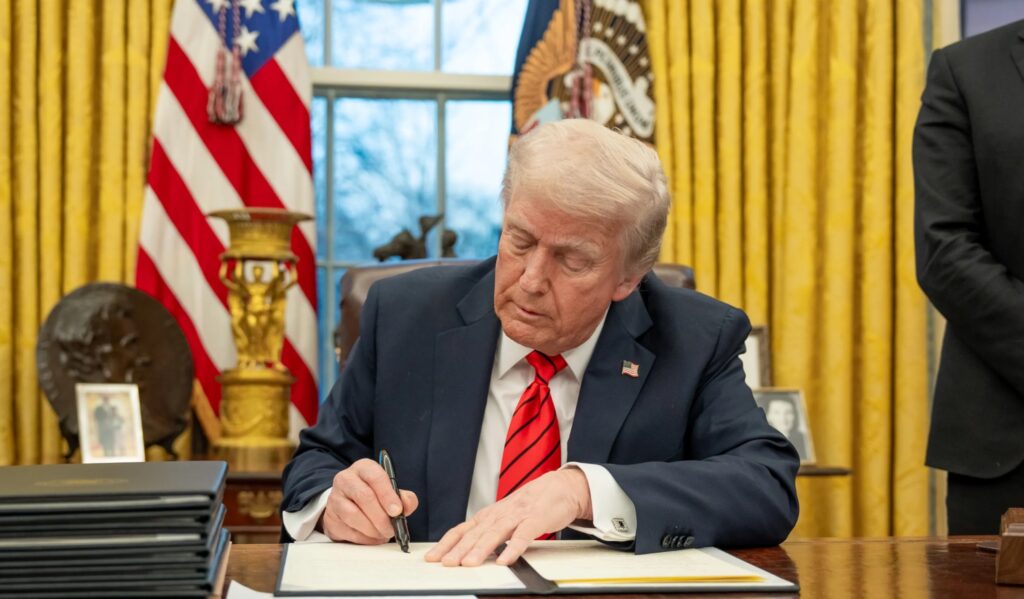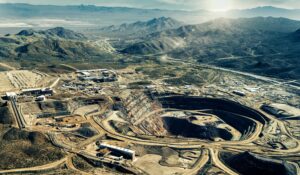Subscribe for Investment Insights. Stay Ahead.
Investment market and industry insights delivered to you in real-time.
President Donald Trump signed four executive orders aimed at overhauling the US nuclear energy sector. These directives seek to expedite reactor approvals, bolster domestic uranium production, and integrate nuclear power into national security and AI infrastructure.
- REINVIGORATING THE NUCLEAR INDUSTRIAL BASE
- REFORMING NUCLEAR REACTOR TESTING AT THE DEPARTMENT OF ENERGY
- ORDERING THE REFORM OF THE NUCLEAR REGULATORY COMMISSION
- DEPLOYING ADVANCED NUCLEAR REACTOR TECHNOLOGIES FOR NATIONAL SECURITY
The drive to accelerate new nuclear reactor deployment is driven by:
- a global race to dominate in artificial intelligence
- a growing need for energy independence
- access to uninterruptible power supplies for national security
“Swift and decisive action is required to jumpstart America’s nuclear energy industrial base and ensure our national and economic security by increasing fuel availability and production, securing civil nuclear supply chains, improving the efficiency with which advanced nuclear reactors are licensed, and preparing our workforce to establish America’s energy dominance and accelerate our path towards a more secure and independent energy future”
— President Donald Trump, Executive Order, Reinvigorating the nuclear industrial base
Regulatory overhaul and licensing acceleration
A key component of the executive orders mandates the Nuclear Regulatory Commission (NRC) to complete rulemakings within 18 months, including establishing fixed deadlines for evaluating and approving licenses, 18 months for new reactors and 12 months for continued operation of existing ones.
The Department of Energy is set to prioritize work with the nuclear energy industry to facilitate 5 gigawatt of power uprates to existing nuclear reactors and have 10 new large reactors with complete designs under construction by 2030.
Additionally, the Department of Energy (DOE) is directed to streamline environmental reviews for reactor testing, potentially bypassing certain National Environmental Policy Act (NEPA) requirements. 
The regulatory overhaul comes after the Nuclear Regulatory Commission (NRC) has authorized only a fraction of the authorized construction of 133 since-completed civilian nuclear reactors at 81 power plants between 1954 and 1978 in the US.
Domestic uranium production and fuel cycle enhancement
The executive orders instruct the Secretary of Energy to develop a plan to expand domestic uranium conversion and enrichment capabilities to meet projected civilian and defense reactor needs for low enriched uranium (LEU), high enriched uranium (HEU), and high assay, low enriched uranium (HALEU). 
Within 120 days of the date of this order, the Secretary of Energy, in consultation with the Chair of the Nuclear Regulatory Commission and the Director of OMB, shall develop a plan to expand domestic uranium conversion capacity and expand enrichment capabilities sufficient to meet projected civilian and defense reactor needs for low enriched uranium (LEU), high enriched uranium (HEU) and high assay, low enriched uranium (HALEU), subject to retention of such stockpiles as are necessary for tritium production, naval propulsion, and nuclear weapons.
In 2024, US uranium concentrate production increased to 676,939 pounds of U3O8, more than tripling the output from 2023.
Integration of advanced reactors into national security infrastructure
Another executive order focuses on deploying advanced nuclear reactor technologies to support national security objectives, including powering artificial intelligence (AI) computing infrastructure and national security installations. 
The Department of Defense is expected to play a prominent role in ordering reactors and installing them on military bases. 
Industry response and market impact
Following the announcement, shares of nuclear-related companies experienced gains. For instance, Constellation Energy, a major S&P 500 nuclear utility, saw its stock price rise, buoyed by the executive orders aimed at revitalizing the nuclear energy sector. 
Expert opinions and safety concerns
While the administration emphasizes the need for rapid nuclear expansion, experts have raised concerns. Former NRC officials and safety advocates warn that the accelerated timelines and regulatory changes could compromise safety standards. They argue that the increased White House control over the NRC might undermine the agency’s independence and the rigorous scientific procedures traditionally upheld.  
Conclusion
President Trump’s executive orders represent a significant shift in US nuclear energy policy, aiming to rejuvenate the industry by streamlining regulations, enhancing domestic fuel production, and integrating nuclear power into national security frameworks. While the initiatives have garnered support from industry stakeholders, they also face scrutiny over potential safety and regulatory implications.
Our latest report on The Great Uranium Disconnect, with new nuclear reactor builds, reactor life extensions and longer term fleet expansions, mean the path has been laid for robust growth of nuclear energy from now through the coming decades.
Subscribe for Investment Insights. Stay Ahead.
Investment market and industry insights delivered to you in real-time.




















